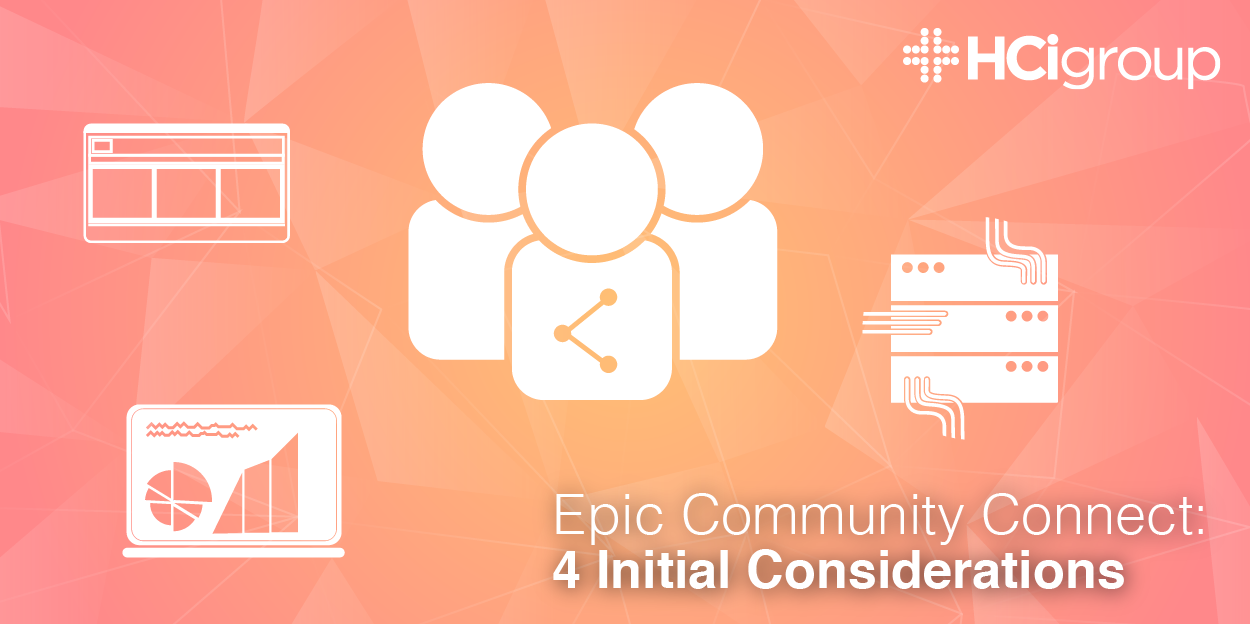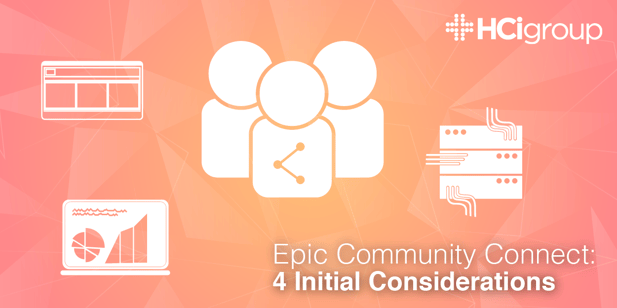Epic Community Connect: 4 Initial Considerations


If your organization has already implemented Epic, you may be considering reaching out and extending it into the community. In this blog, HCI's VP of Community Outreach, Scott Jacobs, discusses what to consider before beginning an Epic Community Connect project.
 Changes in the healthcare market through consumer access to hospital quality data, significant changes in the regulatory environment along with substantial requirements in data management, security and harvesting; are driving a new kind of market consolidation, centered on data and the ability to exchange and report that data.
Changes in the healthcare market through consumer access to hospital quality data, significant changes in the regulatory environment along with substantial requirements in data management, security and harvesting; are driving a new kind of market consolidation, centered on data and the ability to exchange and report that data.
There are a few basic principles to keep in mind when it comes to Epic Community Connect:
- You cannot manage what you don’t measure.
- You don’t get paid for what you don’t report.
- You need to connect and share with competitors.
- You need to become transparent on quality.
The healthcare organizations that measure, understand, report and share clinical data across the community of providers will be positioned to thrive in the next decade. Organizations need to seek out community partnerships to gain the ability to manage and report on the patient’s entire continuum of care.
What should you plan to do as you take this next step?
1. Remember What Community Connect Is
Community Connect is NOT an IT project; it is a strategic community relations project that happens to use technology as the access point. Therefore, your program needs to be built as a strategy, not just an IT project. These initiatives often involve skills and tasks that are not core competencies of an IT department. A good program takes this as well as the strategic focus into account.
2. Epic Community Connect Preparation
Preparation can help you avoid common problems that arise during outreach projects. Firstly, you need to look at the scale and scope of the program. Are you installing just technology, or are you extending clinical expertise? Are you extending an EMR only, or are you performing additional services? Knowing what you are doing is a large part of preparation, as is having a success criteria and set of goals. You have to remember that you cannot buy everyone in your market, and you may need to adapt and become a value-added EMR vendor. This gives you additional qualification as you would be selling more than just technology.
3. Pay Attention to the Branding and Marketing
As a host for your own organization and for paying customers, simple branding decisions, such as which logo goes where on your website, can make a huge impact. Keep in mind that this is now a shared resource for both you and your new customers. Additionally, IT is normally asked to drive the initiative, and it is important to make sure that they can deliver, as well as blend with current marketing and physician relations departments. Community providers, or, your customers, will want a voice, so a system of governance will be beneficial as well.
4. Keep the Technical Side Simple
Remember that you are doing nothing new. Since you have already been through this process, focus on extending what you know, not on expanding to new things. Cost savings are derived from standard install and support, not custom work. We can help you create an integration plan, so you can decide who is connected, and how they are connected, and we can also help you evaluate your support model. Paying customers are going to expect more than corporate customers, so a strong support model will be a crucial factor.
You must control, manage, analyze, connect and share all available data to manage your patient population and control costs while increasing quality and outcomes. Epic Community Connect can help you achieve these things. Current systems do a great job of informing decision making but it is a partial picture; to ensure a robust environment, we must extend and share data.
If you are preparing for an Epic Community Connect project and would like to speak with Scott, please contact us below. You can subscribe to stay up-to-date with the latest expertise.

